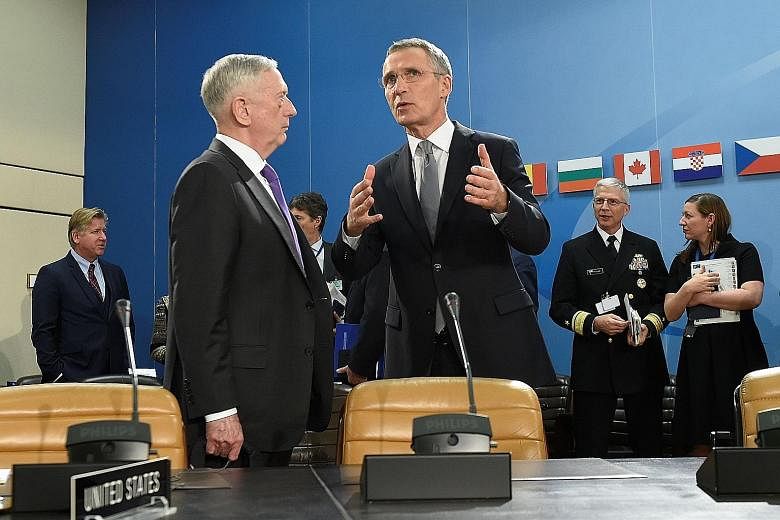BRUSSELS • Nato members have agreed to increase the use of cyber weaponry and tactics during military operations, with the alliance also upgrading other capabilities to combat a resurgent Russia.
The changes are part of Nato's biggest shake-up since the Cold War, with defence ministers backing the creation of two new command centres to help protect Europe. The revamp reflects the "changed security environment" of recent years, Nato chief Jens Stoltenberg said at a meeting of defence ministers in Brussels on Wednesday.
The threat to the alliance's eastern flank has grown as a concern after Russia's annexation of Crimea in 2014. "We are now integrating cyber effects into Nato missions and operations to respond to a changed and new security environment where cyber is part of the threat picture we have to respond to," said Mr Stoltenberg.
"In any military conflict, cyber will be an integral part and therefore we need to strengthen our cyber defences and our cyber capabilities," he added, noting that such tactics have been effective in the fight against the Islamic State in Iraq and Syria (ISIS) militant group.
After years of stripping back its command structure since the end of the Cold War, Nato now wants to add the new command centres - one to protect lines of communication across the Atlantic and one to coordinate the movement of troops and equipment around Europe.
The creation of a new cyber operations hub comes as Nato faces hundreds of attacks on its networks every month and fears grow over the Kremlin's electronic tactics.
Nato declared the cyber realm - in which attackers disrupt websites, intercept communications and sabotage technologies used in combat - as a conflict domain last year, putting it on a par with land, sea and air.
"We have seen a more assertive Russia. We have seen a Russia which has over many years invested heavily in its military capabilities," said Mr Stoltenberg.
"Nato has to be able to respond to that. We are constantly adapting and what we are doing in Europe now is part of that adaptation."
Cyber capabilities will now be included in Nato missions in the same way as planes, tanks and ships are - fully integrated but still under the control of the contributing country.
The North Korean nuclear crisis was also high on the agenda during the two-day meeting, where defence ministers were joined by the European Union's diplomatic chief Federica Mogherini.
"All Nato allies agree that we have to put strong pressure on North Korea because it is responsible for reckless behaviour, irresponsible behaviour developing nuclear weapons and developing missiles," said Mr Stoltenberg.
US Defence Secretary James Mattis was slated to hold a separate meeting yesterday on the Afghanistan conflict with partners from the coalition fighting ISIS in the Middle East.
AGENCE FRANCE-PRESSE

